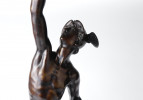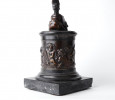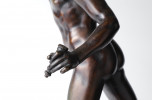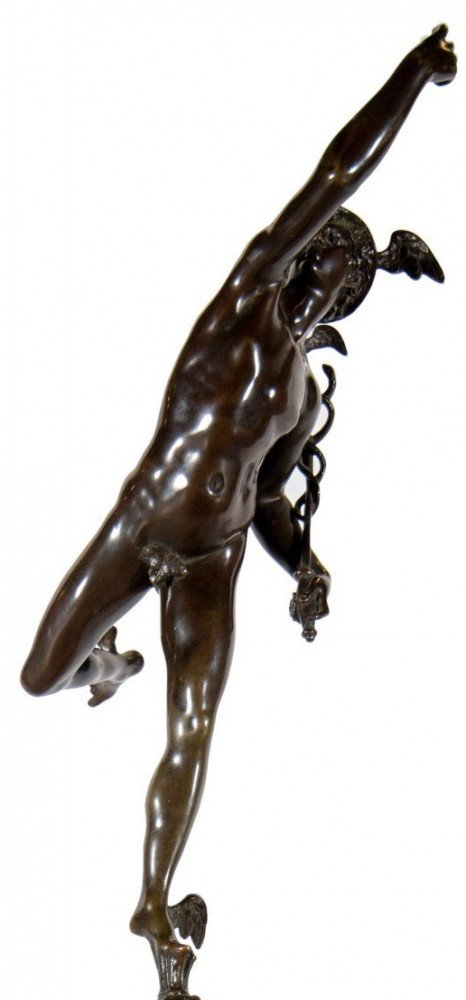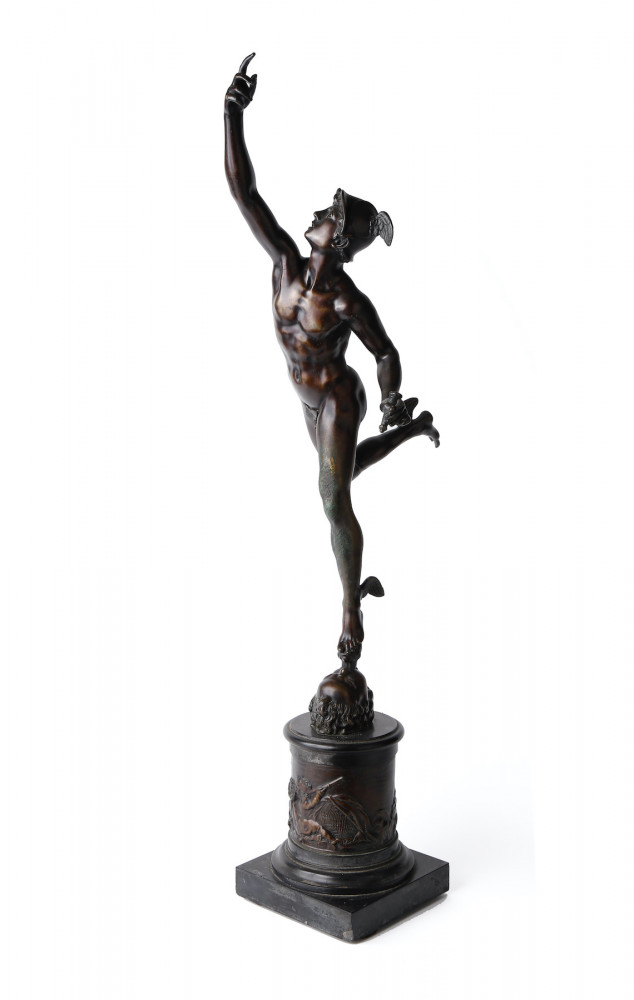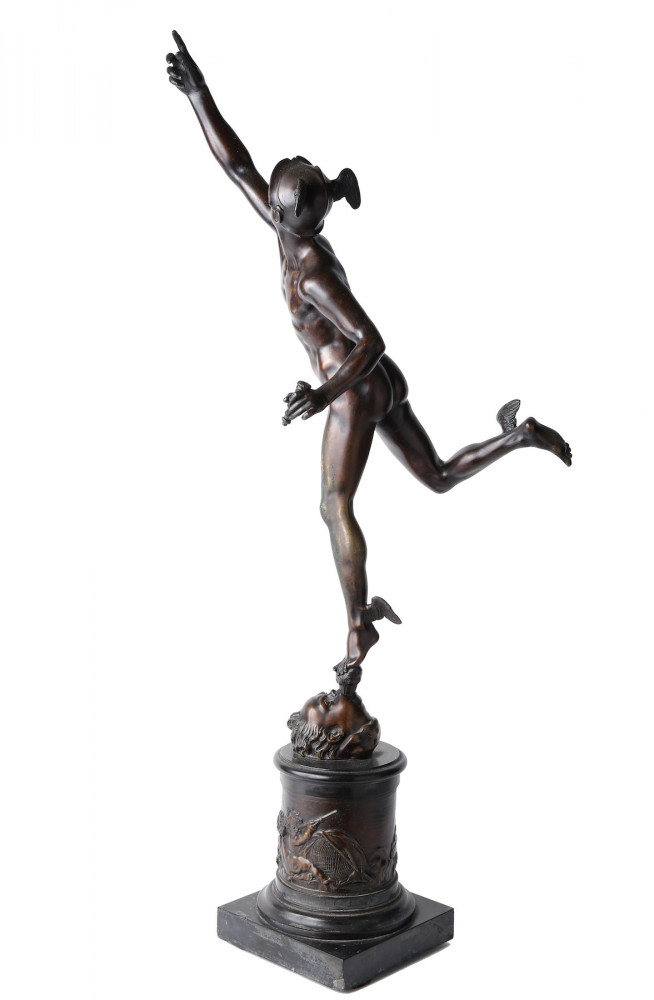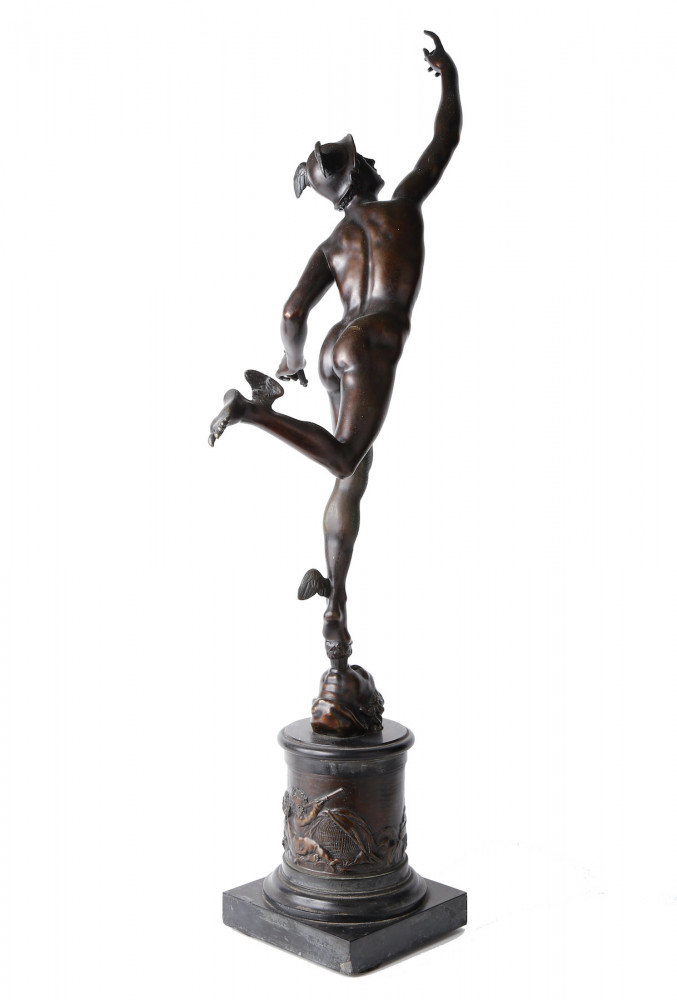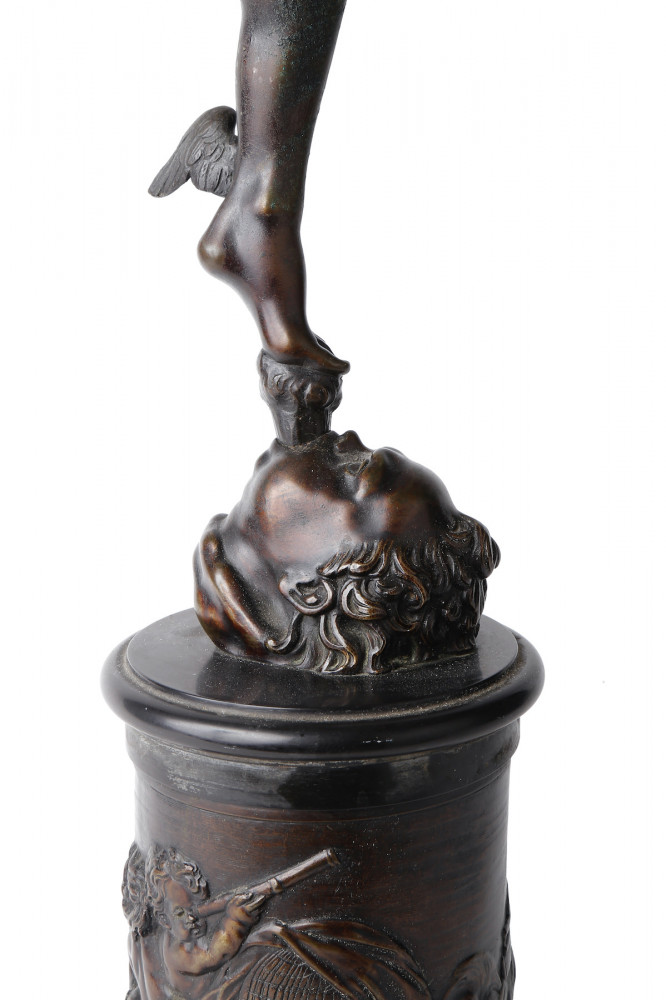Artist: After Giambologna (Italian, 1529–1608)
Medium: Bronze, on bronze base
Dimensions:
Overall: 33 in. h.
Description:
Condition: Missing caduceus in left hand
Created after one of Giambologna’s most celebrated sculptures in the Renaissance, Mercury, was designed as part of a fountain for the Villa Medici in Rome. The head on which Mercury steps symbolizes the figure being “exhaled, purified, unburdened.” When the Giambologna sculpture was unveiled, the work quickly became popular among wealthy collectors’ cabinets of the Renaissance. Additionally, documentation shows that the Medici gave this statue as a diplomatic gift to Emperor Maximilian II, emphasizing its political and social importance. Mercury is shown with his typical attributes of winged sandals and cap, carrying his staff with two entwined serpents, called a caduceus. Along the base, a relief scene of cherubs looking through telescopes and reading large books provides additional association to Mercury’s role as god of travelling and communication.
Type of Work: Sculpture





